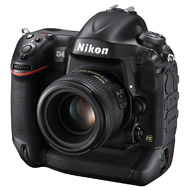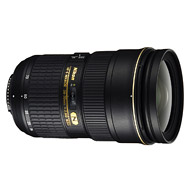What do you think about this photo?Do you have questions or curiosities about this image? Do you want to ask something to the author, give him suggestions for improvement, or congratulate for a photo that you really like?
You can do it by joining JuzaPhoto, it is easy and free!
There is more: by registering you can create your personal page, publish photos, receive comments and you can use all the features of JuzaPhoto. With more than 242000 members, there is space for everyone, from the beginner to the professional.
| sent on August 26, 2012 (16:45) | This comment has been automatically translated (show/hide original)
PS I've never talked to test insignificant Max .. I question how "advertising spot" with which it is presented and then, yes, I say it is "unreliable" .. PS non ho mai parlato di test insignificante Max...metto in dubbio la modalità "spot pubblicitario" con cui viene presentato e allora sì che dico che è "inattendibile".. |
| sent on August 26, 2012 (16:45) | This comment has been automatically translated (show/hide original)
Or even you'll be using 204K ISO 1/8000 f5.6 to stop a hummingbird in flight in a situation much brighter than this (I do every day:-D). So what? no shots because there is still too much light and not enough put in crisis the sensor? And so you get a clibrì all moved?
PS: I am still talking to absurd.
You realize that everyone has their own situations in which it is most often shoot at high ISO, who you are like me at night, some during the day, who at dusk ... Neither my situation, and thy would still be exhaustive to describe the behavior of D4. O addirittura ti troverai ad usare 204K ISO 1/8000 f5.6 per fermare un colibrì in volo in una situazione ben più luminosa di questa (io lo faccio tutti i giorni  ). E quindi? non ci scatti perchè c'è comunque troppa luce e non metti abbastanza in crisi il sensore? E così ti ottieni un clibrì tutto mosso? ). E quindi? non ci scatti perchè c'è comunque troppa luce e non metti abbastanza in crisi il sensore? E così ti ottieni un clibrì tutto mosso?
P.S.: sto ancora parlando per assurdo.
Capisci che ognuno ha le sue situazioni in cui si trova più spesso a scattare ad alti ISO, chi ci si trova come me di notte, chi di giorno, chi al crepuscolo... Nè la mia situazione, nè la tua sarebbero comunque esaustive per descrivere il comportamento della D4. |
| sent on August 26, 2012 (16:47) | This comment has been automatically translated (show/hide original)
But it's not an advertisement! Juza showed ONE of situations, and is reliable as all the others.
considering Questra try a sort of "average" situations: some shooting at high ISO in good light situations ottenedo of the best results of this and other like me shooting in the dark at high ISO the results are far worse Ma non è uno spot pubblicitario! Juza ha fatto vedere UNA delle situazioni, ed è attendibile come tutte le altre.
considera questra prova una sorta di "media" delle situazioni: certi scattano ad alti ISO in situazioni di luce buone ottenedo dei risultati migliori di questo e altri, come me, scattano al buio a ISO altissimi ottenendo risultati di gran lunga peggiori |
| sent on August 26, 2012 (16:51) | This comment has been automatically translated (show/hide original)
We speak in concrete: the ISO 12800 that I use often at night in the dark pesto I make a photo rather noisy. The same if I use them in an oasis of days to stop a heron in flight, I return a photo with very little noise. This situation is in the middle: not dark, not light good ... Parliamo in concretezza: i 12800 ISO che uso spesso di notte al buio pesto mi rendono una foto piuttosto rumorosa. Gli stessi se li uso in un oasi per fermare di giorno un airone in volo, mi restituiscono una foto con pochissimo rumore. Questa situazione sta nel mezzo: non buio, non luce buona... |
| sent on August 26, 2012 (16:54) | This comment has been automatically translated (show/hide original)
In my more than time / diaphragms are talking about a still picture drawn, which shows the potential but not the effective yield. For the use of ISO 204k there may also be, I agree with the fact that a trip to the theater where you need to get that feeling stop a moving subject would be more suitable, but nobody buys a ticket to a test machine, one takes a situation "type" pulls the ISO and was astonished, perhaps under different conditions would be even more impressed and others are disappointed.
However I do not think that the 204K should be seen only in reports, should be assessed also a sport with a quick scene (eg tennis racquet courts) where less than 1/2000 get shake and see at that time and how much engraving keeps the sensor sensitivity . And if tennis shots at night without too much lighting least sixfar from those needs. Another thing misleading is the fact that the photo 51200ISO longer appears engraved the point of focus, but you can see banding and little detail in the hair, which looks better in this at 204K. Secondo me più che tempi/diaframmi stiamo parlando di una foto comunque elaborata, cosa che mostra le potenzialità ma non l'effettiva resa. Per l'utilizzo dei 204k ISO ci possono anche stare, concordo col fatto che uno scatto in teatro dove quella sensibilità ti serve per ottenere fermo un soggetto in movimento sarebbe più adatto, ma nessuno compra un biglietto per testare una macchina, uno prende una situazione "tipo" tira gli ISO e rimane sbalordito, magari in condizioni differenti rimarrebbe ancor più impressionato ed in altre invece deluso.
Comunque non credo che i 204K vadano visti solo in reportage, andrebbe valutato anche uno sport con una scena veloce (esempio racchetta da tennis in battuta) dove a meno di 1/2000 ottieni micromosso e vedere a quei tempi e sensibilità quanta incisione mantiene il sensore. E se scatti tennis in notturna senza troppa illuminazione no sei molto distante da quei bisogni. Altra cosa fuorviante è il fatto che la foto a 51200ISO appare più incisa nel punto di fuoco, ma si vede banding e poco dettaglio nei capelli, cosa che appare migliore in questa a 204K. |
| sent on August 26, 2012 (17:01) | This comment has been automatically translated (show/hide original)
Allow me to post a test I've just done, certainly not in the best way possible, but that compares the performance of the Canon 7D at 6400 ISO, two shots in AV stand, life view and auto exposure.
The first shot I made in my room with the windows open (a fool, I know, but at least I have not compared different photos ...), the second with the windows closed.
From the time of click you can see that the light is reduced to one fifteenth, but the performance has not changed at all.
Ovviemtne comparisons should be made of areas with the same brightness (same ISO equivalent) and not in areas where the opening / closing of windows has upset the brightness.
I'd like to hear your opinions. Mi permetto di postare un test che ho appena effettuato, sicuramente non nel miglior modo possibile, ma che mette a confronto la resa a 6400 iso della Canon 7D, due scatti in AV su cavalletto, life view e esposizione automatica.
Il primo scatto l'ho effettuato con le finestre della mia camera aperte (un sistema balordo, lo so, ma quantomeno non ho messo a confronto foto diverse...), la seconda con le finestre chiuse.
Dai tempi di scatto potete vedere che la luce si è ridotta ad un quindicesimo, ma la resa non è cambiata per niente.
Ovviemtne il confronto va fatto su zone con la stessa luminosità (stessi iso equivalenti) e non in zone in cui l'apertura/chiusura delle finestre ha stravolto la luminosità.
Mi piacerebbe sentire i vostri pareri. |
| sent on August 26, 2012 (17:03) | This comment has been automatically translated (show/hide original)
No correction of the noise (or brightness color, no detail, curve, etc. ... I just balanced the white label on the hard disk). Nessuna correzzione del rumore (né luminosità che colore, nessun dettaglio, curva ecc... ho soltanto bilanciato il bianco sulla etichetta dell'hard disk). |
| sent on August 26, 2012 (17:10) | This comment has been automatically translated (show/hide original)
“ So I am or who I mean bad, or you who do not want to understand „
neither Max .. would be enough to recognize that the conditions in which it was done shooting test facilitated the response of the sensor to the ISO sensitivity.
then tell me if that would have to choose iso 200k to freeze the flight of a hummingbird with a faster shutter speed and would have those results, ok, you're right ... and I'm good results in sensitivity crazy ... but it is not the snap we're talking about!, in the first step of the test - in the particular lighting conditions, subject etc - the choice of utlizzare iso 200k facilitated the response of the sensor, or if you prefer, do not put the whip " Allora o son io che mi spiego male, o siete voi che non volete capire "
nessuna delle due Max...sarebbe sufficiente riconoscere che le condizioni in cui è stato eseguito lo scatto del test hanno agevolato la risposta del sensore a quella sensibilità iso.
se poi mi dici che avrebbe dovuto scegliere iso 200k per congelare il volo di un colibrì con un tempo di posa rapido e avrebbe avuto quei risultati, ok, hai ragione...e sono ottimi risultati a sensibilità pazzesche...ma non è lo scatto di cui stiamo parlando!, nello scatto del test - in quelle particolari condizioni di luce, soggetto etc - la scelta di utlizzare iso 200k ha agevolato la risposta del sensore, o se preferisci, non lo ha messo alla frusta |
| sent on August 26, 2012 (17:16) | This comment has been automatically translated (show/hide original)
Ok, but on this I have always agreed with you. I put the whip even 6400 ISO with my night shots and I made the difficult, but there are many sports photographers, wild, theater, concerts click at high ISO in low light usually much higher than those who reported Juza . Ok, ma su questo son sempre stato d'accordo con te. Io metto alla frusta anche i 6400 ISO con i miei scatti notturni e ho delle rese difficili, però ci son tantissimi fotografi di sport, wild, teatro, concerti che scattano ad iso altissimi in condizioni di luce solitamente molto superiori a queste che Juza ha riportato. |
| sent on August 26, 2012 (17:21) | This comment has been automatically translated (show/hide original)
“ I would post a test I've just done, certainly not in the best way possible, but that compares the performance of the Canon 7D at 6400 ISO, two shots in AV stand, life view and auto exposure.
The first shot I made in my room with the windows open (a fool, I know, but at least I have not compared different photos ...), the second with the windows closed.
From the time of click you can see that the light is reduced to one fifteenth, but the performance has not changed at all.
Ovviemtne comparisons should be made of areas with the same brightness (same ISO equivalent) and not in areas where the opening / closing of windows has upset the brightness.
I'd like to hear your opinions. „
If the result does not change means that offferenza of EV is not sufficient. Stay in one place, the machine on the tripod. Shoot at 6400 iso at sunset (you hundredths of a second if not more) and then wait until the night (moonless preferably) where you have to expose at least 15 sec. Then compare them. If you want to change! Change the 5D II, III, D800 and D4 ... Wilt that the 7D does not change? " Mi permetto di postare un test che ho appena effettuato, sicuramente non nel miglior modo possibile, ma che mette a confronto la resa a 6400 iso della Canon 7D, due scatti in AV su cavalletto, life view e esposizione automatica.
Il primo scatto l'ho effettuato con le finestre della mia camera aperte (un sistema balordo, lo so, ma quantomeno non ho messo a confronto foto diverse...), la seconda con le finestre chiuse.
Dai tempi di scatto potete vedere che la luce si è ridotta ad un quindicesimo, ma la resa non è cambiata per niente.
Ovviemtne il confronto va fatto su zone con la stessa luminosità (stessi iso equivalenti) e non in zone in cui l'apertura/chiusura delle finestre ha stravolto la luminosità.
Mi piacerebbe sentire i vostri pareri. "
Se il risultato non cambia vuol dire che la differenza di EV non è sufficiente. Fermati in un posto, macchina sul cavaletto. Scatta a 6400 iso al tramonto (avrai centesimi di secondo se non di più) e poi aspetta fino alla notte (senza luna preferibilmente) in cui dovrai esporre almeno 15 sec. Poi confrontale. Hai voglia se cambia! Cambia la 5D II, la III, la D800 e la D4... Vuo che la 7D non cambi? |
| sent on August 26, 2012 (17:24) | This comment has been automatically translated (show/hide original)
Ah well ... thanks from 1/90 to 1/6 the decrease of light is not sufficient to appreciate different yields.
Try it when you get to 1/1000 ISO TA 6400 and TA 15 Sec ISO 6400, as it happens to me in real life, then tell me if there is no difference! A drop of light as it gives me different results! "
In tutto questo m'ero scordato il link Sorriso
">www.juzaphoto.com/galleria.php?l=it&cat=singola&t=218517"
Ah beh grazie... da 1/90 a 1/6 il calo di luce non è sufficiente per apprezzare rese diverse.
Prova quando sarai a 1/1000 TA ISO 6400 e 15 Sec TA ISO 6400, come capita a me nelle situazioni reali, poi mi dirai se non c'è differenza! Un calo di luce come questo mi dà risultati diversi! |
| sent on August 26, 2012 (17:26) | This comment has been automatically translated (show/hide original)
Await the darkness and redeem the Kodak and hard disk -. -
;-) Attenderò le tenebre e riscatterò alla Kodak e all'hard disk -.-
 |
| sent on August 26, 2012 (17:27) | This comment has been automatically translated (show/hide original)
Ok, but on this I have always agreed with you. I put the whip even 6400 ISO with my night shots and I have made difficult, however “ there are many sports photographers, wild, theater, concerts click at high ISO in low light usually much higher that these Juza reported.
„
and this is me to agree with you Ok, ma su questo son sempre stato d'accordo con te. Io metto alla frusta anche i 6400 ISO con i miei scatti notturni e ho delle rese difficili, però " ci son tantissimi fotografi di sport, wild, teatro, concerti che scattano ad iso altissimi in condizioni di luce solitamente molto superiori a queste che Juza ha riportato.
"
e su questo sono io ad essere d'accordo con te |
user1756 | sent on August 26, 2012 (18:11) | This comment has been automatically translated (show/hide original)
“ There are many sports photographers, wild, theater, concerts click at high ISO in low light usually much higher than those that Juza reported.
„
will be true
but then when you look at the picture you see flat images without many tones which probably served
then can be useful to the lack of tones sometimes become creative
but in 90% of the images you appreciate other things
would be useful to assess how the ISO image holds
are excluded special cases, exceptions etc. ....
;-) " ci son tantissimi fotografi di sport, wild, teatro, concerti che scattano ad iso altissimi in condizioni di luce solitamente molto superiori a queste che Juza ha riportato.
"
sara anche vero
ma poi quando si guardano le foto si vedono immagini piatte prive di molti toni dove probabilmente servivano
poi puo essere utile la mancanza di toni a volte anche diventare creativo
ma nel 90% delle immagini si apprezzano altre cose
sarebbe utile valutare fino a quanti ISO l'immagine regge
sono esclusi casi particolari, le eccezioni ecc....
 |
| sent on August 26, 2012 (18:18) | This comment has been automatically translated (show/hide original)
Max
obvious that everyone has different needs in the way of shooting.
but there are certain common points of reference, on which all agree.
And one of these is the high iso, that one does not go to look for them if you do not really need.
As for high ISO and fast shutter speeds, absolutely real cases, this no one has ever questioned anything.
But surely it is not that if the car makes it so quite acceptable in a static portrait to 200k iso with fast then surely it follows that in a portrait at the theater with a moving subject then you definitely will make good. Change the distance to the subject and also changes the difficulty of the shot ...
Anyway how to write cmq is clear that you agree too, only if the subject is therefore notYou can disagree too:-D
Max
ovvio che ci ognuno ha esigenze diverse nel modo di scattare.
ma ci sono certi punti di riferimento comuni, su cui tutti sono d'accordo.
E uno di questi sono gli alti iso, cioè uno non se li va a cercare se non servono veramente.
Per quanto riguarda iso alti e tempi di scatto veloci, casi assolutamente reali, su questo nessuno ha mai messo in dubbio niente.
Ma di sicuro non è che se la macchina rende in modo tutto sommato accettabile in un ritratto statico a 200k iso con tempi veloci allora ne discende che sicuramente in un ritratto a teatro con soggetto in movimento allora sicuramente renderà bene. Cambia la distanza dal soggetto e cambia anche la difficoltà dello scatto...
Cmq da come scrivi cmq è chiaro che sei d'accordo anche tu, solo che se il soggetto della foto quindi non puoi dissentire troppo 
|
user1856 | sent on August 27, 2012 (10:36) | This comment has been automatically translated (show/hide original)
skip the rest because it is a speech hackneyed but I would like to point out what is said every now and then taking a wild gem ....
“ Not even the EOS 1V is small and portable. And 'bigger and pesande the D4 soon. „
EOS 1V -> 161 x 120.8 x 70.8 mm 945 g
nikon d4 -> 160 x 157 x 91 mm 1340 g
in practice d4 is only 2 cm thicker almost 4cm higher, weighing only 42% more than the canon ... the face that the old 1v both moments big and heavy ...
salto tutto il resto perchè è un discorso trito e ritrito ma vorrei puntualizzare su cosa si dice ogni tanto prendendo uan chicca....
" Nemmeno la Eos 1V è piccola e tascabile. E' più grossa e pesande della D4 a momenti. "
eos 1V -> 161 x 120,8 x 70,8 mm 945 gr
nikon d4 -> 160 x 157 x 91 mm 1340 g
in pratica la d4 è solo 2 cm più spessa è quasi 4cm più alta, pesando solo il 42% in più della canon... alla faccia che la vecchia 1v sia a momenti più grossa e pesante...
|
| sent on August 27, 2012 (11:57) | This comment has been automatically translated (show/hide original)
I do not see how it could be heavier than the analog since it contained the missing quite a few little things. same thing with the Eos 1n boxter and 24-70. weighs like a 5d with the same lens (most gram gram less) Non vedo come potrebbe essere più pesante l'analogica visto che dentro gli manca un bel pò pò di roba. stesso discorso della Eos 1n con boxter e 24-70. pesa come una 5d con medesima lente (grammo più grammo meno) |
| sent on August 27, 2012 (12:54) | This comment has been automatically translated (show/hide original)
“ EOS 1V -> 161 x 120.8 x 70.8 mm 945 g
nikon d4 -> 160 x 157 x 91 mm 1340 g
in practice d4 is only 2 cm thicker almost 4cm higher, weighing only 42% more than the canon ... the face that the old 1v both moments big and heavy ...
„
Goodness is a figure of speech! Where I come from we say so is to say that there are there like weight! But all you have to do? As we want to make precisini, there was talk of digital and analog not only referring to the top of the range, so we are wanting high quality digital SLR definitely read more of Eos 1v. As there are analog and digit pocketwings pocket. So as good ....
Or to let me know I have to mention models, size, weight and type of material they are made of?
It 'sure that the digital weights a little' more, but not to create problems appreciable (except some extreme cases) " eos 1V -> 161 x 120,8 x 70,8 mm 945 gr
nikon d4 -> 160 x 157 x 91 mm 1340 g
in pratica la d4 è solo 2 cm più spessa è quasi 4cm più alta, pesando solo il 42% in più della canon... alla faccia che la vecchia 1v sia a momenti più grossa e pesante...
"
Santo cielo è un modo di dire! Dalle mie parti si dice così per dire che son lì lì come peso! Ma non avete altro da fare? Visto che vogliamo fare i precisini, si parlava di digitale e analogico non solo riferito alle top di gamma, quindi volendo ci son Reflex digitali di ottima qualità assolutamente più leggere della Eos 1v. Come ci sono analogiche tascabili e digitali tascabili. Quindi da bravi....
O per farmi capire devo citare modelli, dimensioni, peso e il tipo di materiali con cui son costruite?
E' sicuro che il digitale pesi un po' di più, ma non da creare problemi apprezzabili (eccetto alcuni casi estremi) |
| sent on August 27, 2012 (13:07) | This comment has been automatically translated (show/hide original)
By quote
Nikon F6 Film no Battgrip: 975g 157x119x78.5
Nikon D800 digital Battgrip no: 147x123x77 900g
Be good now? Dai citiamo
Nikon F6 a pellicola no Battgrip: 975g 157x119x78.5
Nikon D800 digitale no Battgrip: 900g 147x123x77
Fate i bravi adesso? |
|

Publish your advertisement on JuzaPhoto (info) |




 JuzaPhoto contains affiliate links from Amazon and Ebay and JuzaPhoto earn a commission in case of purchase through affiliate links.
JuzaPhoto contains affiliate links from Amazon and Ebay and JuzaPhoto earn a commission in case of purchase through affiliate links.



